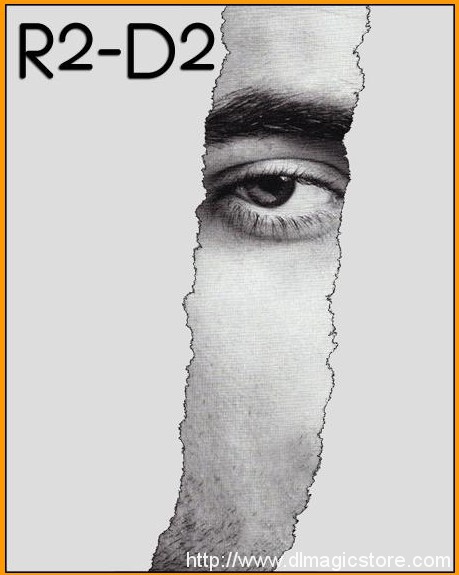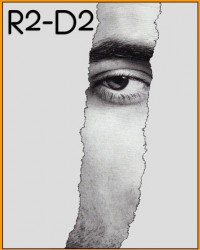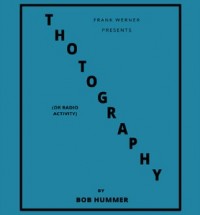My Account
This product was successfully added to cart!
R2D2 by Doug Dyment
 Shipping: International shipping available
Shipping: International shipping available Shipping time: Instand download
Shipping time: Instand download Discount: Purchase more than $20 and get automatically 20% discount on checkout (more than $4.99 for 10%, $15 for 15% discount on checkout)
Discount: Purchase more than $20 and get automatically 20% discount on checkout (more than $4.99 for 10%, $15 for 15% discount on checkout) Handling time: Send within 1 business days after receiving cleared payment
Handling time: Send within 1 business days after receiving cleared payment Returns: 7 days money back guaratee
Returns: 7 days money back guaratee
Product Detail
IMPORTANT! READ THIS FIRST
Shipping Guide
Sending Time
Product Tags
R2D2 by Doug Dyment
download file send to your email
A Monograph on an Optimal
Billet Tear with 2 Real-Time Peeks
What can one say about billet tears that hasn't already been said? Do we really need another one? How many ways can there be to fold and tear a piece of paper? The answers just might surprise you!
R2-D2 embodies a truly original approach, not merely another variation on an old theme. A tear that has been engineered from the ground up to meet twentydemanding, objective criteria:
Twenty Billet Tear Evaluation Criteria
-
The peek(s) must be optimized for execution in real time (i.e., during the tearing sequence).
-
Each peek must be coincident with a specific tearing, to justify the eye movement.
-
The tear must also accommodate those performers — and performing situations — requiring a delayed read (i.e., non-real-time, with the “hot” portion of the billet retained in the hand for later reading, under conditions offering less scrutiny, stronger cover, and/or further removed in time from any overt manipulation of the paper).
-
It must be possible to view a substantial portion (at least half) of the original billet during the peek(s).
-
Before the entertainer receives the billet, it must be folded at least twice, with intersecting folds, such that the writing seems safely concealed on the inside.
-
It must be possible to perform at least the first couple of tears (when onlooker scrutiny is most intense) with eyes fully averted.
-
The actual tearing process must be physically undemanding: a tear shall never encompass more than four thicknesses of paper, and never begin at a folded edge.
-
The actions must be effective when performed with dry fingers.
-
The information to be read shall not require placement in an idiosyncratic fashion, but be centred on the vertical axis of the paper (when held in normal writing position).
-
No illogical tears are permitted; they must always encompass the entire billet, and be down the middle of its shorter dimension (i.e., no lengthwise tears, partial tears, “off-centre” tears, etc.), exactly the way a person would normally tear a packet of paper.
-
No illogical moves should be used (e.g., unnecessary turnovers; unexplained rotations; counting/“fiddling”/flipping of paper layers; finger insertions; etc.), nothing that appears in any way unusual.
-
There shall be no requirement for “careful” folding (i.e., no stepped edges, skewed folds, overly precise alignments, etc.); everything should be casual and require no special attention.
-
Repeated actions must appear consistent (i.e., tears must look identical, unfoldings must open in the same way, rotations must be in the same direction, etc.), the way that a normal person would do them.
-
There should be no significantly “unbalanced” tears: each hand should grip approximately the same amount of paper during each tear.
-
There shall be no writing orientation issues: the peek(s) should display the information in its original, upright position.
-
The post-performance detritus may contain no unexpected shapes, disproportionate sizes, or any other evidence of trickery: the resulting pieces should be thoroughly examinable and unremarkable.
-
There must be no reliance on hidden actions: the tearing should be an open, transparent process, exactly as it appears, with no concealed openings or actions, and taking place at the fingertips.
-
Except for the moment and sightline of the actual peek(s), all billet actions should be clearly viewable from any direction, with no written portion of the billet exposed at any time.
-
During the actual peek(s), no more than one quarter of the billet surface area should be exposed, to facilitate its concealment.
-
No unduly special paper can be required, in size, shape, or composition (including grain orientation); it’s fine for the tear to be optimized for a particular type of billet, but it should still work when used with other types.
Fortunately, the R2-D2 billet tear is both easily learned and performed: given its many practical benefits, you’ll surprise yourself with just how “goof-proof” this actually is. If your current favourite method doesn’t measure up to these standards, why not consider this fresh, game-changing approach?
And the book offers much more than the methodology itself, with groundbreaking thinking contributed by some of mentalism’s busiest workers: new plot ideas, thoughts on justifying billet usage, and subtle strategies to elevate your game.
So if you’re intrigued by billet work, but have found existing methodologies to be complicated, convoluted, constraining, contorted, contrived, confusing, or simply less than compelling, you may well discover R2-D2 to be just what you’ve been searching for!

PLEASE NOTE: This item is a downloadable Video or Ebooks . Gimmick not included.
Once your order information has been verified, we will send URL links direct to your email address. They will appear as hyperlinks. You simply click on each link one by one, and accept the download on to your hard drive. Downloading time will depend on a variety of factors, such as your local bandwidth, etc.
The following is the process you should take to complete your order through bank to bank transfer:
1. Please go to your bank (through online banking, ATM or going into a branch) and complete the transfer of money. Make sure that the amount you transfer is the exact total of your order. Payment details below:
- If your bank is located in Austria, Germany, Spain, France, United Kingdom, Italy, Netherlands, Belgium, Finland, Greece or Luxemburg you will pay to our WorldPay bank. You will see the bank details once you have placed the order.
PLEASE NOTE: If you are paying to our WorldPay bank you MUST include the Unique Payment Reference Number (you will receive this directly after paying the order) in the description section when completing payment to help us identify your order. Failure to do this will result in an unsuccessful transaction.
- If your bank is located in a country not listed above you will pay to our HSBC account. The details are below:
Bank Account:
Bank Code:
Beneficiary:
Bank Name:
Bank Address:
SWIFT Code:
PLEASE NOTE: If you are paying in this way you MUST write your Yourname order number in the description section when paying so we can easily recognize your payment. Failure to do this will result in a delayed or failed transaction.
2. When this is done, log in to your Yourname ‘My Account’ and complete the following:
Click ‘Order list’
Click ‘Pay’
Click ‘Complete Payment’ and fill in the related information for verification (This is an important step. If the information you have filled in does not match your bank details the payment can not be completed.)
Click ‘Submit’ to finish the procedure.
3. You will receive a payment confirmation email from us after your order’s payment has gone through successfully. If you do not receive this email, please contact us here: http://www.dlmagicstore.com/help/
Please note that dlmagicstore will begin to handle your items after payment has been cleared.
All magic ebooks and videos are send via email .If the file already been upload ,we can send immediately . If not , we need 2 or 3 days to upload the file .







